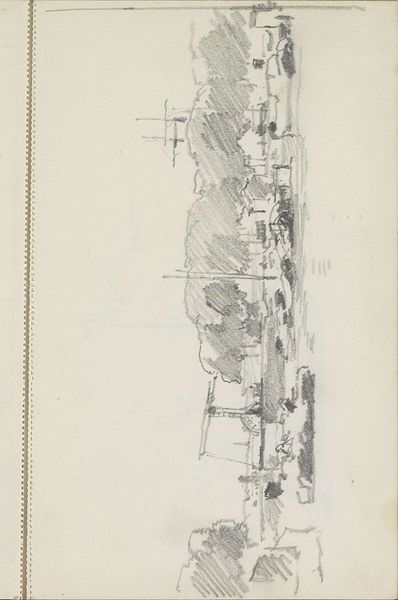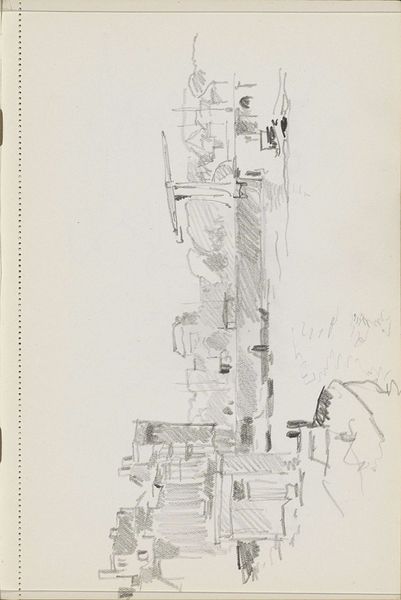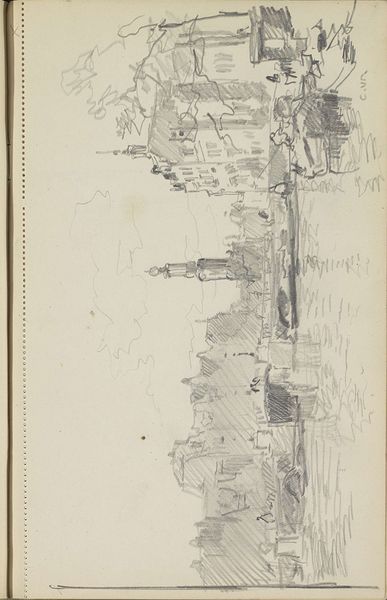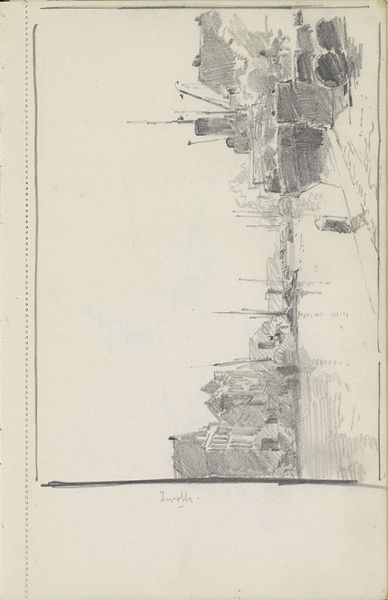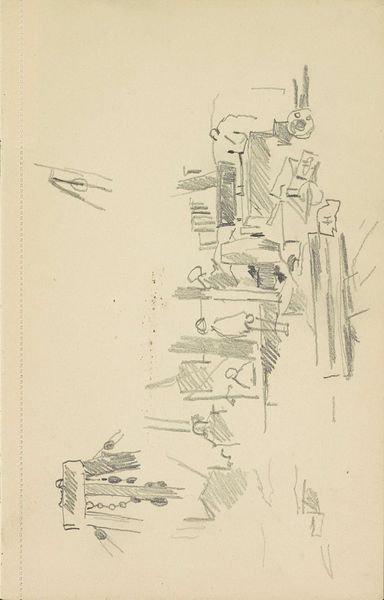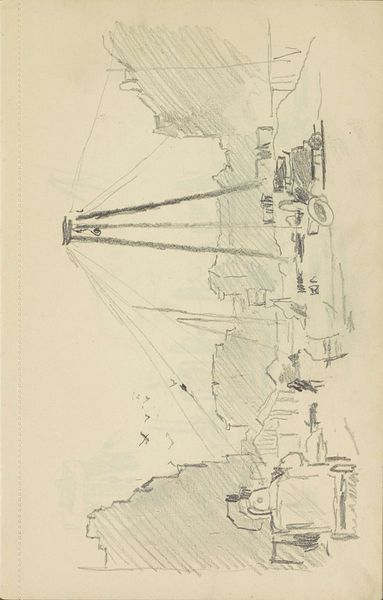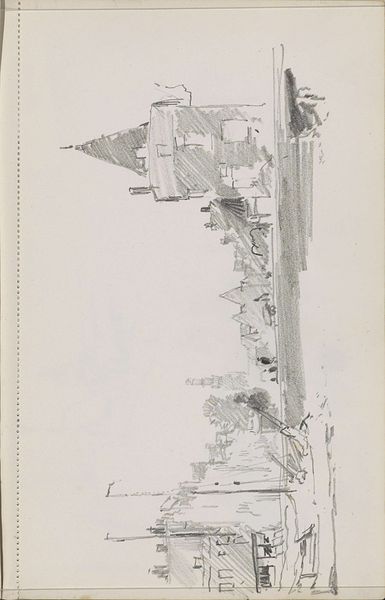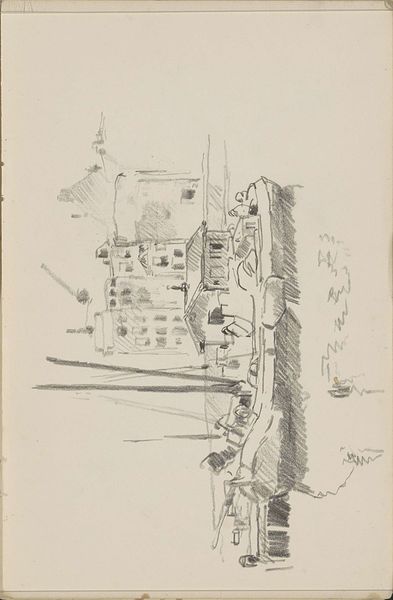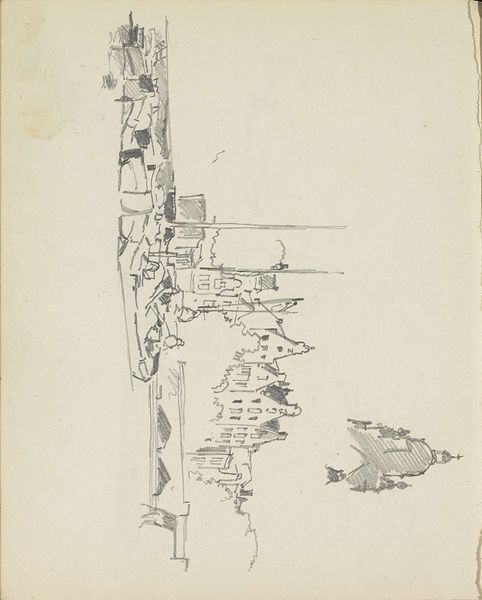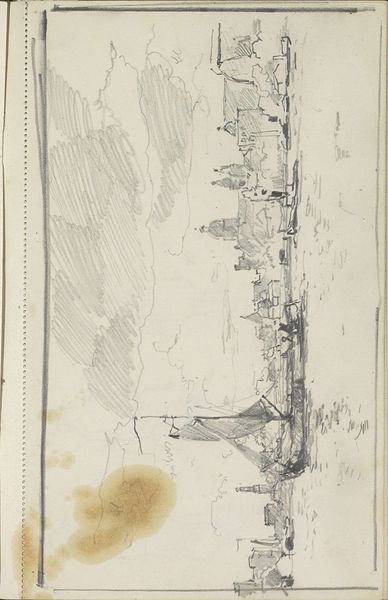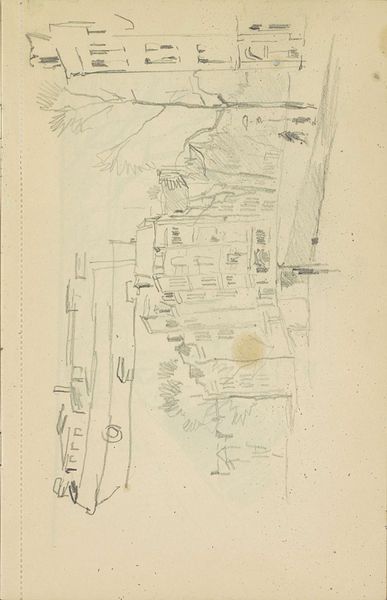
Copyright: Rijks Museum: Open Domain
Curator: We're looking at Cornelis Vreedenburgh's pencil drawing on paper, "Haven bij de Prins Hendrikkade te Amsterdam," dating from between 1890 and 1946. Editor: The loose, sketched lines immediately evoke a feeling of impermanence, like a fleeting moment captured. It makes me think about the laborers along the canals and waterways that would be supporting Amsterdam at the time. Curator: It is quite striking how he's utilized a common, easily accessible material – graphite – to portray what was probably considered a mundane subject in Amsterdam. Pencil drawings allowed artists to rapidly explore and record what was in front of them without the overhead of a studio or extensive tools. Editor: Yes, and how this 'mundane subject' is loaded with class and labor dynamics! I think of the social realities of the people dependent on this port – the workers, merchants, and families intertwined with this industrialized harbor. The rapid, transient strokes you mention capture that lived tension, the ever-present labor required to run a city like Amsterdam. Curator: We see an example of Realism mixed with emerging Impressionistic style in the atmospheric qualities. The drawing also poses questions about value, especially given our contemporary separation of "high art" and preparatory sketches. Was this intended as a final work, or a study for something else? Editor: Right, because sketches offer us direct access to an artist’s process! We see the making of this industrialized moment – its dependence on natural resources, like wood, its impact on local people whose labor powers the commercial exchanges that happened at this site along the water. And that access can also remind us that artistic creations are always filtered through the artist’s subjectivity and context. Curator: The unadorned pencil on paper forces us to confront the very basic components of image making and what it can show or represent, with attention both to the industrial materiality of graphite and paper production. Editor: Indeed. Reflecting on this harbor scene through the lens of social history and materiality truly enriches our understanding, urging us to appreciate the historical moment but also its reverberations in current discussions about labor, value, and representation.
Comments
No comments
Be the first to comment and join the conversation on the ultimate creative platform.
